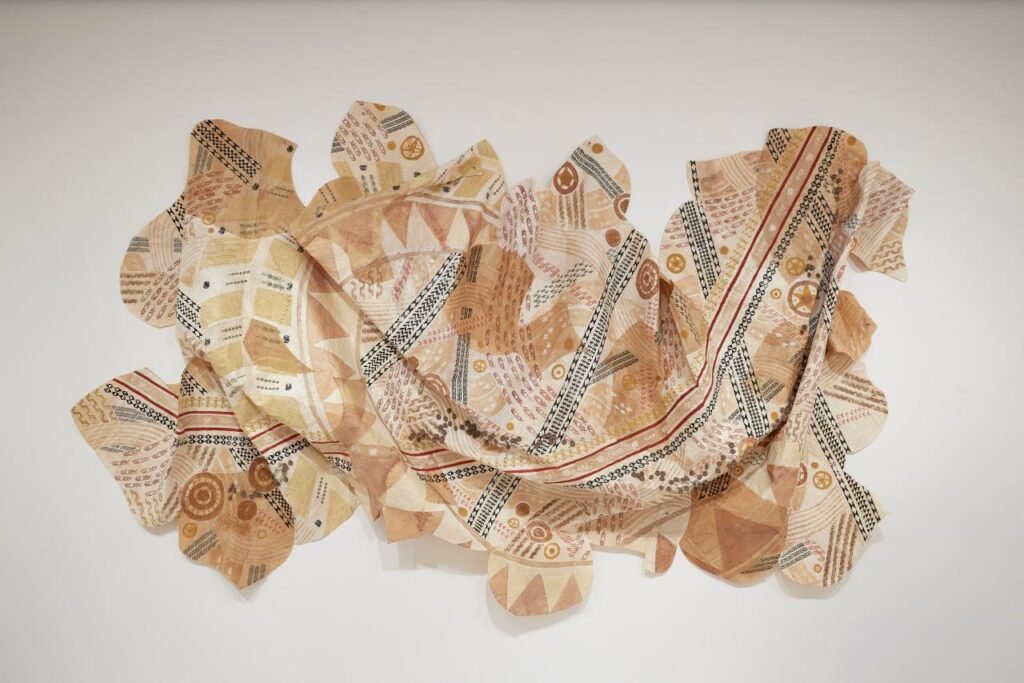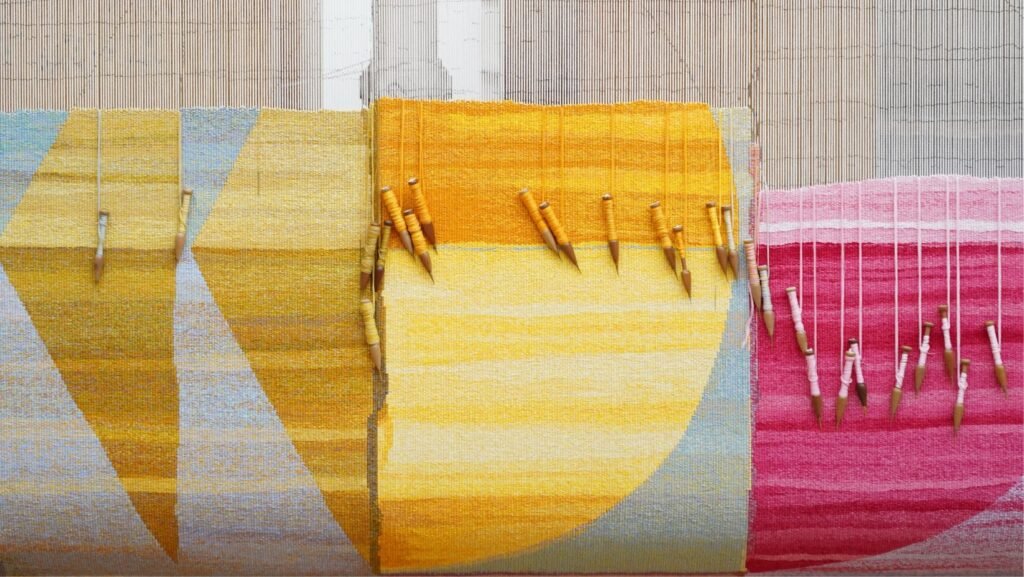Australian tapestry is an art form that has grown from its European colonial roots into a unique expression of the nation’s history, culture, and evolving identity. This article explores the development of tapestry in Australia, from its early European influences to the incorporation of Indigenous artistry and the dynamic contributions of contemporary artists.
The Origins of Australian Tapestry: A European Influence
While the Indigenous peoples of Australia have long expressed themselves through textile arts, the specific tradition of tapestry weaving as it is known today was introduced with European colonization. The first major tapestry works in Australia were produced in the mid-20th century, inspired by the European traditions of Flemish, French, and British weaving. These early tapestry artists were largely influenced by the intricate designs and weaving techniques brought over by European settlers.
The creation of tapestries became associated with the decorative arts and public commissions, often used to adorn the interiors of institutions and private residences. A key moment in the development of Australian tapestry was the establishment of the Australian Tapestry Workshop in Melbourne in 1976, which became a landmark in the craft’s evolution. The Workshop provided a platform for Australian artists to experiment with weaving, enabling the integration of traditional techniques with modern design principles.

The Role of the Australian Tapestry Workshop
The Australian Tapestry Workshop played a crucial role in the transformation of tapestry from a decorative craft into a respected fine art form. Its mission was to bring together weavers and visual artists, allowing the former to bring the designs of the latter into fabric form. This collaboration was integral in creating a distinctly Australian approach to tapestry weaving, one that incorporated the country’s landscape, culture, and evolving artistic sensibilities.
Artists like Margaret Preston, Grace Crowley, and John Coburn worked with master weavers to translate their bold, abstract paintings and drawings into woven pieces. Tapestry thus began to move beyond its origins as a decorative object to become a means of artistic expression and social commentary. These works became a way to reflect the natural world, Australian identity, and even the country’s complex history and politics.
One of the most iconic works produced at the Australian Tapestry Workshop is John Coburn’s “The Sun” (1977), which exemplifies the movement towards modernist design in Australian tapestry. Coburn’s tapestry integrates vibrant color fields with sweeping shapes, evoking a sense of the Australian landscape while simultaneously engaging with universal themes of renewal and energy. The work became a defining example of how contemporary art could be expressed through the ancient craft of tapestry weaving.
Indigenous Influence on Australian Tapestry
As Australian art evolved, so too did the role of Indigenous culture in shaping the national artistic identity. Aboriginal and Torres Strait Islander artists began to engage with tapestry weaving, incorporating traditional designs, symbols, and stories into their work. This melding of Indigenous knowledge with the modern medium of tapestry helped create a new layer of complexity and relevance for the craft.
One of the most important figures in the development of Indigenous tapestry art is Gloria Petyarre, whose works explore the symbolism of the desert landscape and Dreamtime stories. Petyarre, along with other Indigenous artists, adapted traditional Indigenous motifs and stories into large-scale tapestries, weaving together ancestral memory and contemporary technique. The impact of this innovation has been profound, with Indigenous tapestry works gaining increasing recognition both in Australia and internationally.
These tapestries go beyond decorative purposes to address social and cultural issues, bringing attention to the complexities of identity, land ownership, and the ongoing challenges faced by Indigenous communities. Through the medium of tapestry, artists like Petyarre have transformed the craft into a powerful tool for cultural preservation and social commentary.
The Growth of Contemporary Tapestry
By the late 20th and early 21st centuries, Australian tapestry had firmly established itself as an art form in its own right, breaking free from its decorative roots and engaging with contemporary issues. The medium became a way for artists to experiment with texture, form, and abstraction, while maintaining the rich traditions of weaving that define the craft.
Contemporary tapestry artists often incorporate materials beyond traditional wool, using silk, linen, and synthetic fibers to create textures that enhance their designs. The integration of modern technology, such as digital weaving looms, has expanded the possibilities for contemporary artists, allowing for even more intricate patterns and larger-scale works. Tapestry as an art form is now fully integrated into the broader visual arts scene, with weavers frequently showing their work in major art galleries and international exhibitions.
Artists such as Jennifer Robertson, Anne Ferran, and Kay Lawrence have explored the contemporary potential of tapestry by focusing on themes such as memory, identity, and environmental sustainability. Their works challenge the traditional boundaries of tapestry, often addressing both personal and political narratives, and offering a more experimental, conceptual approach to weaving.

Tapestry as a Medium for Public Art
One of the most remarkable aspects of Australian tapestry is its embrace of public art. Tapestry weaving has transcended the confines of galleries and is often commissioned for public spaces, adding a tactile, intimate quality to urban environments. Large-scale tapestries now adorn the walls of civic centers, universities, and cultural institutions, contributing to the architectural and cultural fabric of Australian society.
Perhaps the most famous example of public tapestry art in Australia is the National Gallery of Australia’s “Canberra Tapestry” (1985), a massive work created by several prominent artists in collaboration with weavers. The tapestry is a reflection of the country’s national identity, incorporating symbols and themes that are emblematic of the Australian experience. Public tapestry commissions, such as this one, highlight the medium’s ability to engage with the community and provoke dialogue about national identity and heritage.
The Future of Australian Tapestry
The future of Australian tapestry is bright, with an increasing number of artists embracing the medium to explore contemporary themes, from ecological concerns to identity politics. As the craft continues to evolve, there is a growing recognition of its place within the broader context of Australian art and culture.
Tapestry in Australia today is a dynamic and evolving art form, one that continues to weave together the nation’s rich artistic heritage with its future possibilities. It is an art form that reflects the diversity of Australian society, bringing together tradition and innovation in every thread.
Written By: Gabriela Colombo
Published: 19th February 2025